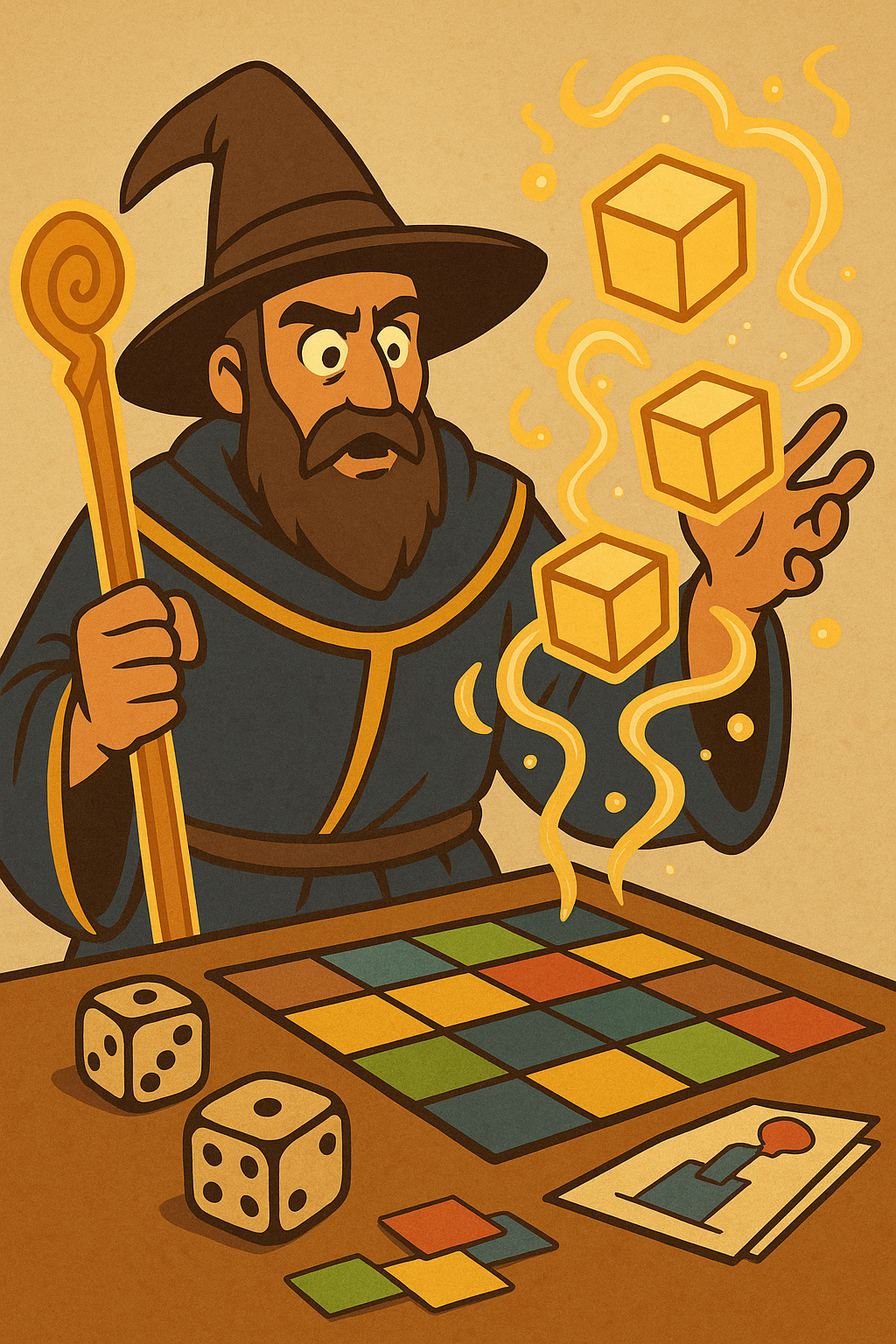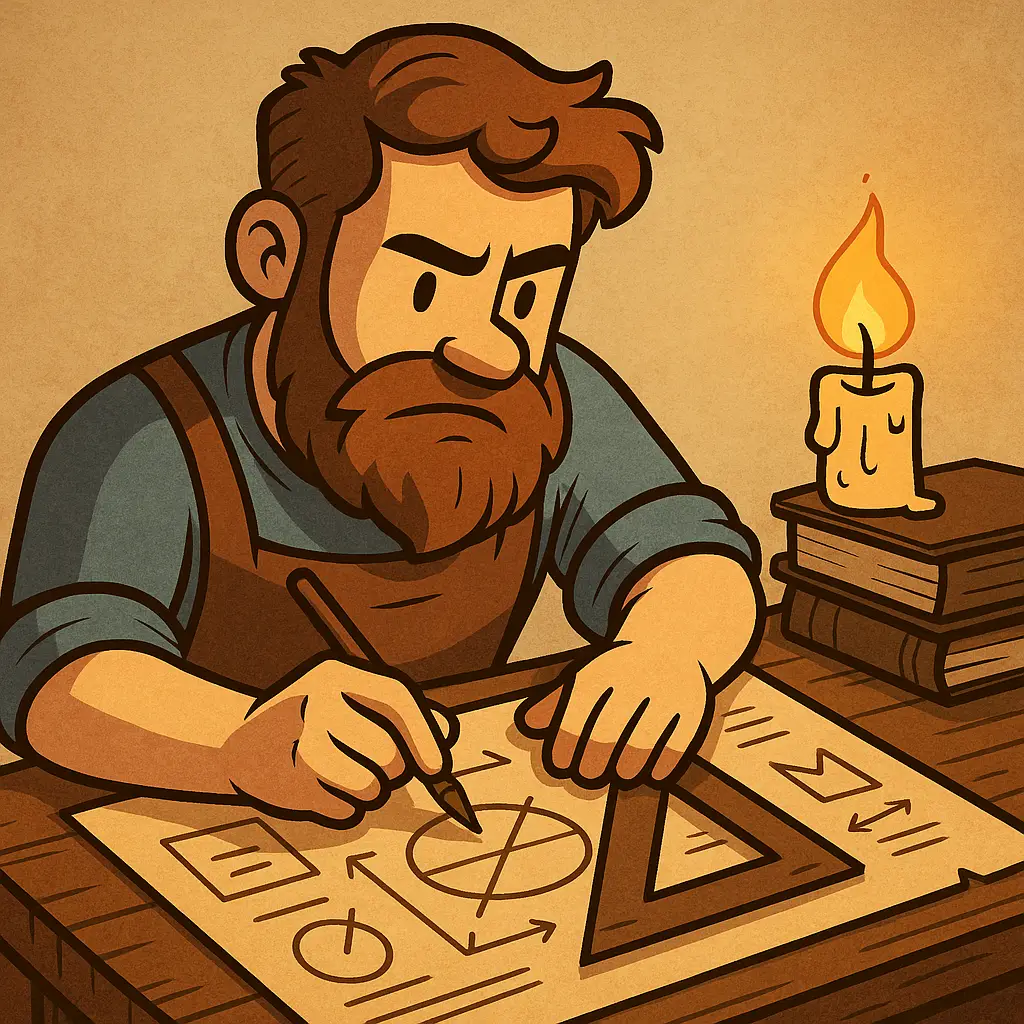How to bring the cunning of Clue, the strategy of Risk, and the chaos of Monopoly into your magic system
Not all spells need to be about fireballs and healing words.
In fact, some of the most fun, flavorful, and memorable spells in a tabletop RPG aren’t borrowed from real-world folklore or high fantasy—they’re borrowed from board games.
Yes, really.
Board games are full of mechanics that drive drama, tension, and victory—not unlike the best spellcasting moments in TTRPGs. Whether it’s the calculated dominance of Risk, the deduction dance of Clue, or the spreading dread of Pandemic, each game has systems that can be translated into spell design gold.
Today on RPGInquisitor, we’re diving into a vault of original spell ideas inspired by classic board games. These aren’t just novelty spells. They’re well-structured, balanceable, and highly usable in most fantasy systems—from D&D to Pathfinder to your own homebrew magic world.
Let’s get rolling.
From Mechanic to Magic: The Design Process
Before we dive into specific spells, here’s how we translate a board game mechanic into a functional magical effect:
- Identify the core mechanic. What makes the board game tick?
- Map that mechanic to a magical theme. Would it feel like divination, enchantment, illusion, or something else?
- Create a use case. Is this a combat spell? Utility? Social encounter tool?
- Add risk or cost. Great spells offer power, but always at a price or with a twist.
With that in mind, let’s open the grimoire.
🕵️ Clue: Deduction and Hidden Knowledge
Board Game Mechanic: You uncover a secret through process of elimination.
Spell: Whispers in the Parlor
School: Divination
Level: 2nd
Effect: The caster whispers a question aloud. The target (within 60 feet, must be a humanoid or creature with a mind) must respond truthfully with either “yes,” “no,” or “uncertain.” The spell then removes one of the remaining incorrect answers from a mental “list” the caster holds.
Use Case: Solving mysteries, narrowing down suspects, interrogating without obvious questioning.
Bonus Mechanic: Each time the caster uses this spell on the same mystery, the risk of false whispers increases by 10%.
Why it works: It captures the slow, satisfying feeling of closing in on the truth—without instantly solving the whole problem.
🌍 Risk: Area Control and Strategic Planning
Board Game Mechanic: Conquering territory and managing units.
Spell: Strategist’s Gambit
School: Enchantment
Level: 4th
Effect: The caster selects a battlefield or location within line of sight. For the duration of combat (up to 10 minutes), all allied creatures in that area gain +1 to AC and saving throws as long as they remain within a designated 20-foot-radius “controlled zone.”
Use Case: Crowd control, defensive boosts, holding choke points.
Bonus Mechanic: The caster must declare the zone at the start of the spell. Enemies who remain in the zone for more than 2 rounds take psychic damage as they feel the mental pressure of the strategist’s control.
Why it works: This spell rewards planning and territorial dominance—perfect for players who like to play tactician.
🦠 Pandemic: Spreading Threats and Time Pressure
Board Game Mechanic: Disease spreads if not contained.
Spell: Contagion Echo
School: Necromancy
Level: 3rd
Effect: Infects one target with a magical “echo” curse. Each time the infected target takes an action, there is a 25% chance they emit a pulse that causes 1d6 necrotic damage to all creatures within 10 feet. The infection spreads to another nearby creature if they fail a Constitution saving throw.
Use Case: Area denial, crowd chaos, risk-based battlefield disruption.
Optional Rule: The caster can “vaccinate” one ally per round, making them immune to the echo effect for 1 minute.
Why it works: The tension of managing a growing, hard-to-track magical problem matches Pandemic’s escalation system beautifully.
🧱 Jenga: Structural Integrity and Collapse
Board Game Mechanic: Everything is fine… until it isn’t.
Spell: Tremble-Tether
School: Transmutation
Level: 3rd
Effect: You place an invisible magical tether on a structure, wall, or terrain feature. It remains stable for 1 minute. After that, any significant impact (attack, spell, fall, etc.) triggers a chain collapse, forcing nearby creatures to make Dexterity saving throws or be buried in rubble.
Use Case: Environmental storytelling, traps, collapsing bridges and towers during dramatic moments.
Creative Twist: Multiple tethers can be used across a dungeon to create delayed, cinematic destruction.
Why it works: The looming threat of collapse creates tension and narrative weight, even if the spell isn’t flashy.
🏛 Monopoly: Resource Accumulation and Control
Board Game Mechanic: Accrue assets and generate passive income or pressure.
Spell: Arcane Eminent Domain
School: Conjuration
Level: 5th
Effect: The caster magically marks a building, ship, or territory (up to a 60-foot cube) as their arcane property for 1 hour. While marked, the caster:
- Can detect intruders
- May summon small magical constructs (d6 HP) to patrol it
- Gains minor resources (1d6 gp worth of magical essence per hour if undisturbed)
Use Case: Long rests in dangerous territory, defending a base, asserting arcane dominance in towns or castles.
Caveat: Can only have one claimed domain active at a time. Casting the spell again severs the previous link.
Why it works: Monopoly isn’t just about buying—it’s about owning space and using that ownership to gain power. This does exactly that, magically.
🔍 Battleship: Hidden Threats and Targeted Strikes
Board Game Mechanic: Guessing hidden enemy locations and making strategic strikes.
Spell: Blind Barrage
School: Evocation
Level: 4th
Effect: The caster targets a 10×10 grid area (100 square feet) and “declares” a coordinate within it (the grid must be mapped visibly or verbally defined). If an enemy is standing in that exact coordinate, they suffer 6d6 force damage and are knocked prone.
Use Case: Clearing invisibility, creating fear, punishing hidden snipers.
Balance Mechanic: Missed shots still cause minor force pulses (1d6) to everyone within 5 feet of the target area, including allies.
Why it works: It’s a game of guesses—but informed guesses. In the right hands, it turns the battlefield into a tactical puzzle.
💥 Connect Four: Pattern Recognition and Chain Reactions
Board Game Mechanic: Line up similar elements to win.
Spell: Sequence Surge
School: Evocation
Level: 3rd
Effect: Targets up to 4 enemies in a line or pattern (must be adjacent or diagonally connected within 10 feet). If all targets are affected, they each take 3d6 lightning damage and are stunned until the end of your next turn.
Fail Condition: If fewer than 4 targets are hit or if they don’t form a valid pattern, the spell fizzles and deals half damage with no secondary effect.
Use Case: High-risk, high-reward crowd control.
Why it works: It rewards positioning and careful targeting—perfect for tactically-minded players who see the battlefield like a board.
🎭 Operation: Precision and Risky Movement
Board Game Mechanic: Precision leads to success, but mistakes hurt.
Spell: Surgical Strike
School: Necromancy or Transmutation
Level: 2nd
Effect: Target a creature with a visible weak point (declared by the caster based on anatomy or previous wounds). If the attack roll is a 15 or higher, you deal double damage. If it’s a 5 or lower, the caster takes half that damage instead, from arcane backlash.
Use Case: Targeting specific wounds, executing precise attacks, high-stakes boss moments.
Why it works: It turns the caster into a scalpel—not a sword. And it rewards anatomical knowledge, roleplay, or good timing.
🦴 Mousetrap: Chain Reactions and Setup Payoff
Board Game Mechanic: Build a mechanism that triggers on command.
Spell: Trapwright’s Flourish
School: Conjuration
Level: 4th
Effect: The caster prepares a magical Rube Goldberg–style trap in one round of setup. The trap doesn’t activate immediately—it waits for a trigger (enemy movement, damage taken, word spoken). Once activated, the trap unleashes 6d6 piercing/slashing damage and restrains the enemy in a tangle of conjured chaos.
Use Case: Ambushes, dungeon defense, dynamic encounters.
Special Note: The trap can be seen and disarmed with a high Perception or Arcana check, making it a visible but volatile threat.
Why it works: Mousetrap isn’t about raw damage—it’s about payoff. Same with this spell.
🧠 Final Thoughts: Board Games Are Secretly Full of Spell Ideas
Board games and TTRPGs share DNA:
- Both are about problem-solving.
- Both hinge on clever mechanics.
- Both thrive when tension is high and choices matter.
That makes board game mechanics a goldmine for inventive spell design.
From area control to deduction to unpredictable chain reactions, these inspirations offer more than gimmicks—they offer spells that change how players think, how GMs design encounters, and how worlds feel alive.
So next time you stare at your game shelf, ask:
“What if this mechanic was a spell?”
You might just invent your party’s new favorite ability.

